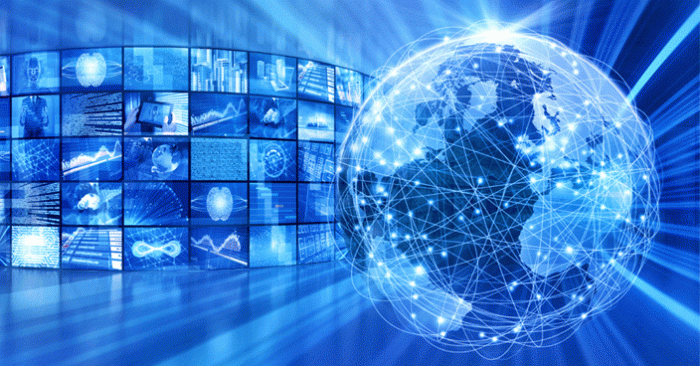We are used to technology having a strong impact on all areas of our lives. Sometimes, it can be easy to forget that significant changes don’t happen easily and take a lot of time. For example, new social health policies require society to adopt new wellness practices and forget about the stigmas that surround mental health. Changing beliefs and habits takes time, and these factors also play a very important role in the adoption of any disruptive technology.
One of the main factors that drive changes is a crisis, and the COVID-19 pandemic has demonstrated that sometimes, a significant crisis can quickly change our lives in many ways. However, there are also less noticeable factors that can be even more powerful, even though their effect may not be seen immediately. For example, one of the strongest drivers of progress is entertainment. When talking about the impact of entertainment, it’s important to keep in mind that entertainment comes in all shapes and sizes. Modern people consume lots of entertainment content, including movies, music, stories, and a variety of immersive experiences, as well as social media content, with its countless influencers and trends.
In this article, we will consider the ways entertainment shapes the world of tech and defines wellness trends.
Entertainment Changes Social Health and Behavioral Patterns
According to research, cinematic and prime-time storytelling are among the main factors that shape social behavior. Obviously, such an impact is not always positive. For instance, tobacco companies have collaborated with the TV and film industries for many years, promoting smoking in movies since the 1920s. Many movie stars of the past, including Audrey Hepburn, John Wayne, and Humphrey Bogart smoked on screen and therefore made their contribution to the popularity of this unhealthy habit. In contrast, fitness activities that are often depicted in modern movies make a healthy lifestyle more popular, promoting another behavioral model.
The impact of movies on society has been used by Hollywood to promote a healthier lifestyle for more than 15 years. For instance, the USC Annenberg Norman Lear Center has collaborated with the Annenberg School for Communication and Journalism, providing Hollywood producers and writers with the necessary support to create stories that address important social and health issues. From 2012 to 2017, they created over 1,000 storylines for different streaming and cable channels, addressing a range of topics, including obesity, cancer, antibiotic resistance, and autism.
At the same time, the rapidly growing digital wellness market realizes that music can help such platforms increase engagement and retention. The audio trend in wellness was quickly adopted by Apple Fit, Headspace, Calm, and Peloton. More and more audio-based wellness apps appear here and there, including such startups as Lucid Project, Sona, and Endel. Although Calm, Spotify, and Apple remain leaders in the digital wellness area, the variety of startups in this industry demonstrates that the general public becomes more and more interested in personalized health tools, wellness content, and music suggestions backed by psychology. Thanks to software development companies like Vironit, everyone who has great ideas and the necessary funding can launch a new wellness app.
Of course, the impact of entertainment on social health is not always positive, especially when it comes to social media. Social media platforms are extremely addictive, and they heavily exploit the concept of social comparison. Influencers who get paid for keeping high engagement levels share pictures and videos of their luxury lifestyle 24/7, with followers constantly experiencing the fear of missing out (FOMO).
According to research by Anxiety UK, 53% of people note that social media changed their behavior, and 51% of users evaluate such changes as negative. The most common effects of social media usage are decreased self-confidence, sleep disorders, anxiety, and depression. Besides, social media promotes unrealistic beauty standards and creates countless opportunities for cyberbullying. 87% of teenagers have observed cyberbullying, and 33% of them have been victims of cyberbullies.
Entertainment Predicts the Future of Technology
The boundaries between technologies depicted in sci-fi movies and real technologies often become so blurry that it gets difficult to understand whether Hollywood impacts the tech industry or vice versa. While companies like Microsoft, Google, and Apple presented many disruptive technologies during the last few decades, Hollywood certainly kept us prepared for innovations by showing new concepts long before they became real.
For example, Star Trek deserves particular attention for its prediction of some health technologies that were created not so long ago. For instance, the tricorder, which appeared in the Star Trek series in 1974, was based on the same idea as Scanadu Scout, which was introduced in 2017. NASA used the same idea when developing their latest generation of health scanners. Friendly robots like R2D2 or BB-8 from Star Wars certainly made their contribution to the wide acceptance of AI-based assistants like Alexa and Google Assistant. The replicator from Star Trek: The Next Generation was a direct predecessor of 3D printers that are now used by scientists to work with human tissues.
When Star Wars: Return of Jedi was filmed in 1983, the idea of brain-controlled prosthetic limbs was complete fiction. Now, the Defense Advanced Research Projects Agency demonstrates real progress in this direction, and Elon Musk’s Neuralink considers the development of brain-machine interfaces its main priority. The list of technological advancements that appeared in sci-fi movies many years ago and then became a reality could go on and on, and even hologram live concerts are no longer something new.
While it’s very exciting to see some technologies from movies come to life, it can also be quite disturbing. For instance, the British dystopian series Black Mirror has demonstrated how technology can be used to limit people’s freedoms and to manipulate users’ behavior through mobile devices. Unfortunately, such scenarios have also already become real. For example, China now uses a social ranking system combined with mass surveillance, which is a subject of concern for many human rights organizations from all over the world.
Wrapping Up
The impact of entertainment on tech and wellness is difficult to overestimate. From movies predicting tech trends to music becoming a valuable tool for wellness app developers, technology and entertainment always go hand in hand. Sci-fi movies often prepare society for innovations, enabling us to evaluate creative ideas and helping engineers gear their efforts in the right direction. At the same time, it’s important to keep in mind that the impact of technology is not always positive. Many dystopian scenarios can become our reality someday so awareness of possible consequences should help us protect our future.
This article is sponsored by SolidSignal.com. For the best in entertainment technology, shop at SolidSignal.com. Need help? Call us at 888-233-7563.






“For instance, the tricorder, which appeared in the Star Trek series in 1974”.
I don’t think Star Trek was active in 1974. Did you mean 1964 (when the pilot was filmed)?